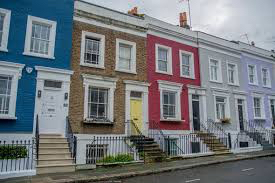Temporary rate reduction
| Presenting the Summer Economic Update on 8 July 2020, the Chancellor, Rishi Sunak, announced a much-anticipated reduction in residential stamp duty land tax (SDLT). Where completions take place between 8 July 2020 and 31 March 2021, the residential SDLT threshold is raised to £500,000 from £125,000. The reduction will also benefit those buying second homes and investment properties who will pay 3% on the first £500,000 of the consideration where the purchase price is at least £40,000. First-time buyers will only feel the effects where the consideration tops £300,000; prior to 8 July 2020, first-time buyers paid no SDLT on the first £300,000 of the consideration.As a result of the reduction, the rates of residential SDLT in England from 8 July 2020 to 31 March 2020 are as set out in the table below. |
Reductions have also been announced to the residential rates of Land and Buildings Transaction Tax (LBTT) in Scotland and Land Transaction Tax (LTT) in Wales.
The reduction only applies to residential property rates; the rates for commercial and mixed properties are unchanged.
It is therefore important to be clear whether a property is a residential property or not.
For SDLT purposes a residential property is defined (in FA 2003, s. 116) as a building used or suitable for use as:
- a dwelling, or is in the process of being constructed or adapted for use as a dwelling;
- the garden or grounds of such a building, including buildings of structures on such land;
- an interest or right over land that subsists for the benefit of such a building or land (for example, a right of way)
The test is at the effective date of the transaction.
It should be noted, particularly as regards garden and grounds, the test of what counts as residence for SDLT is not the same as that for CGT, and a separate sale of a garden (but not a subsequent sale) will be regarded by HMRC as residential property for SDLT irrespective of whether it would qualify for main residence relief for CGT purposes.
Care should also be taken when purchasing a property is a dilapidated state; as shown in the Tribunal Decision is P N Bewley Ltd v HMRC [2019] TC06951, what HMRC may consider to be a ‘dwelling’ may differ from what a lay person may regard as being suitable for use as dwelling.
Prior to the rate reduction, it was in HMRC’s interests for SDLT to be payable at the residential rates; the arguments and case law used then in their favour may help the taxpayer now.
While the reduction applies, it makes sense for completions to take place prior to 1 April 2021. However, the reduced rates only apply to residential properties defined as such for SDLT purposes
